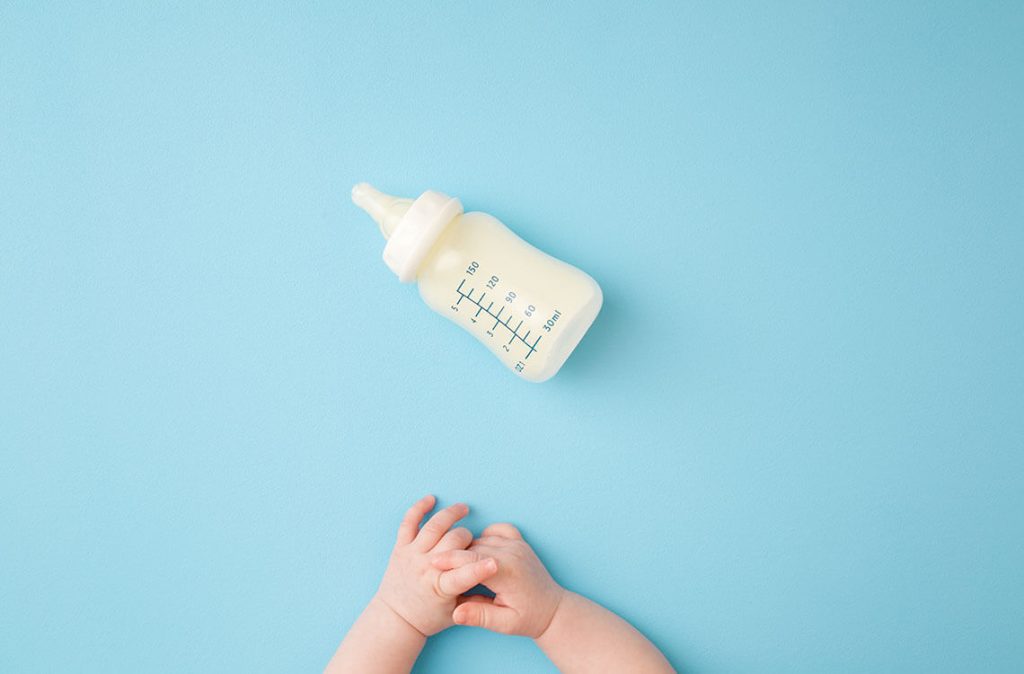Things can get pretty overwhelming for first-time parents, especially when it comes to picking out the things their baby needs. Diapers, clothes, car seats, toiletries, and yes, even baby bottles. As hard as it is to believe, baby bottles are not made equal. There’s a different type for every baby, depending on age, feeding habit, and any medical condition they may have. When it comes to choosing the right baby bottle for your baby, here are a few things to keep in in mind.
Material
Baby bottles can be made out of various materials. Glass, plastic, silicone and yes, even metal. While it does fall on preference as to what material the parents want, there are also some pros and cons to consider. Glass is usually the gold standard; its inert, non-toxic, holds onto heat well and is see-through, allowing you to measure the milk. Silicone has the same benefits plus its malleable and soft in the baby’s hand. But glass bottles may be prone to breakage, which makes silicone the better option out of the two. Metal (usually stainless steel) is the most durable, but it’s also the most expensive. Plastic is the cheapest but it may release toxic compounds like BPA and phthalates, especially when exposed to strong heat.
Size
Baby bottles also come in different sizes. And it’s usually more than just small, medium and large. It goes without saying that the size of a baby bottle corresponds to how old the baby is. Newborns usually use the smallest size, while older babies require bigger ones. This is because babies require different amounts of milk as they age. For instance, newborns don’t necessarily drink a lot of milk in one sitting, and yet they do require regular feedings. Many parents will usually get the entire set of baby bottles from ages 1 month to 2 years old. With these sets the manufacturer will usually indicate what size bottles are appropriate for what age.
Bottle
Baby bottles also come in different shapes. And this isn’t for aesthetic reasons. Depending on what special need your baby has, the bottle shape may make a world of difference. There are generally four common bottle shapes: straight, wide and angled. Straight ones are usually the standard for many brands and will appeal to most babies. Wide bottles are good for babies who regularly switch between breast to bottle. And the angled bottle is a great option to prevent your baby from getting gas when they feed. If you find that your baby makes a lot of sucking noises while they feed, they may be swallowing air. This may not be the bottle’s fault and could just be your baby’s natural feeding habit, however. While it’s not harmful, you may need to burp them regularly between servings to prevent them from vomiting later, or crying from gas.
Nipple
Just like the body of the bottle, the nipple also comes in many variations. This primarily refers to the ‘flow’ of the nipple: how much milk comes out of the hole. As your baby grows, they’re usually be able to swallow more milk, so the nipple hole for most baby bottles will need to change as time goes on. Nipples for newborns typically have light flow with the smallest hole size. These ensure that your baby isn’t choking on the milk. Older babies will usually prefer nipples with heavier flows since they won’t be satisfied with what comes out. If you’re on a budget, it can be almost unreasonable to buy new nipples just for different hole sizes. What may often happen is that many parents just enlarge the hole on the existing nipple themselves with a kitchen tool. But bottle nipples need to be replaced every three months anyway, so you might as well get new ones with the correct flow size.
Choosing the Right Bottle
Even if your baby is currently breastfeeding there may come a day when you may wish to switch to formula. Or bottle-feed your baby breastmilk so you can take a break from breastfeeding, which many mothers do. So bottles may end up being inevitable in the end. Looking back at all the many variations, it can be daunting to start looking for a bottle now. Especially if your baby hasn’t even arrived yet. It’s impossible to predict your baby’s preference, which can change as they age and move from breastfeeding to bottle-feeding.
However, experts agree that a standard bottle is usually the go-to. Your baby will eventually grow into it as they age. But this may not always be the case and you will have to experiment with different types to get your baby to feed properly. That said, even if you think the new bottle you’ve gotten for your baby may not be fit for them, give it a few weeks. Your little bundle of joy may just need a little more time adjusting to their new bottle. Just be patient and you’ll have them enjoying their feeding times in no time.
For more insightful stories and fun recipes, stay tuned to Motherhood Story!
